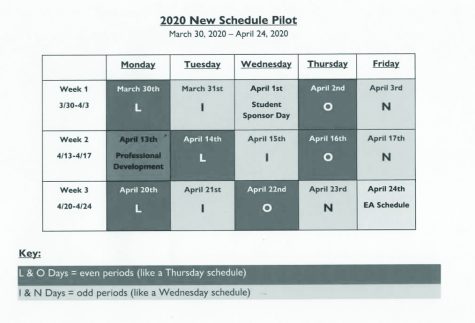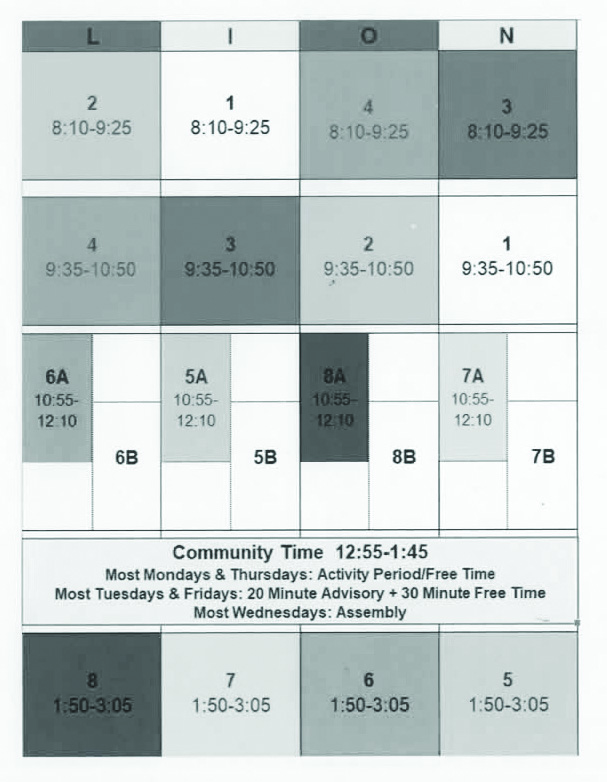The Year of the Block: A Long Schedule Rant
Love will be in the air this Valentine’s Day, although it’s hard to see if Lakeside students will set any aside for the new schedule. The proposed all-long-block leviathan debuted last week to a mixed reception and will undergo a pilot program this spring before a final rollout next year, joining competencies and mindsets on the roster of big Lakeside changes. The administration says it will optimize learning. They claim it is the best science can offer, the clear winner of proposed schedule discussions, the solution to slam day stress. Let’s take a closer look.
First, a little lesson on schedule anatomy. A regular week in the clink is 5 days, three short two long (45 vs 75-minute periods), although irregular “special schedules” are a constant threat. The interesting thing about the new schedule is that there is no regular week. The four-day rotation based on the current “long block” days (Wed-Thurs) will have students rotating their schedules. Besides forcing you to read the bull, this will have little practical effect, as anyone worth their salt can tell A/C from B/D/ come Monday morning. “Community time” will replace advisory, activity period, and assembly with a midday rotation between the three (refer to Aidan’s January article for more specifics). Classes will meet between two and three times a week depending on the rotation, and never meet back to back (this means no slam days as you’ll only have half the academics on any given night).

Equalizing class amounts between grades puts older students at a disadvantage, as higher-level classes tend to meet less a week. The glory days of short block extra frees are gone. Free time in the new schedule will come from another source, standardized every-day lunch. In exchange for a small decrease in free time (4.5% for the average week), I will be able to eat lunch at a reasonable time. I encourage everyone to calculate how much or how little they’ll lose.
Whether or not the schedule will optimize learning is a minimal concern to this writer, in all honesty. The fact of the matter is that it will optimize the crushing sense of boredom on a long block day with no frees. Friday offers a new thing every 45 minutes. If this thing is hard, it is so for 45 minutes. Now picture a lineup of your four least favorite classes, back to back to back to back, for over an hour of each one (often 75 straight minutes depending on the subject/teacher). While you’re going through less classes, and arguably less homework the night before, the school day itself is a lot harder mentally and can feel like much more of a slog. It will also be a Stanford Prison Experiment of sorts to see how much or little the homework load changes. Exponents of a long block schedule will argue that it eliminates slam days and therefore lessens student stress, as you aren’t coming out of Thursday with 6-8 classes to prepare for. However, some would say that the power of long-block separation will corrupt teachers, leading them to assign more homework as they will know you have two days to do it. This is entirely speculative at this stage, included in this article merely as a potential concern (and a plea for mercy).
While there are benefits to this schedule (consistent lunch, no slams), a small drop of precious free time and the prospect of long-block slogs make it an unappealing option for me. As short block frees become a thing of the past, lifting and meeting with teachers could also become more difficult. Try it out for yourself, see how these numbers run, speculate on whether or not we’ll get rid of slams, and then let your advisor know how you feel. As with all new things, we’ll have to try it out to see for sure, but the responsibility will be on the administration to make the transition as smooth as possible.

